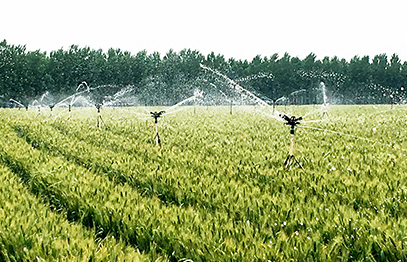Nov . 26, 2024 21:26 Back to list
Submersible Pump and Motor Systems for Efficient Water Management Solutions
Understanding Submersible Pumps and Motors A Comprehensive Overview
Submersible pumps and motors are essential components in various industries, including agriculture, wastewater management, and groundwater extraction. Their design and functionality allow them to operate underwater, making them ideal for applications where conventional pumps would struggle to perform efficiently. This article delves into the unique features, benefits, and applications of submersible pumps and motors.
What is a Submersible Pump?
A submersible pump is designed to be submerged in fluids for pumping purposes. Unlike traditional pumps that rely on a suction mechanism, submersible pumps push fluid to the surface, which improves efficiency and reduces the risk of cavitation. These pumps are typically sealed in a waterproof casing, allowing them to function effectively underwater.
The primary components of a submersible pump include
1. Impeller The rotating part that imparts kinetic energy to the fluid. 2. Pump Housing The protective casing that contains the impeller and other internal parts. 3. Motor Often integrated with the pump, this drives the impeller and provides the necessary power.
How Submersible Motors Work
Submersible motors power the pumps while submerged. They are hermetically sealed to prevent any fluid ingress, which could lead to system failure. These motors are designed to operate in demanding environments, with features such as cooling systems to manage temperature and corrosion-resistant materials to withstand harsh conditions.
There are primarily two types of submersible motors
1. Synchronous Motors These operate at a constant speed and are known for their efficiency in producing high torque. 2. Induction Motors These are more commonly used due to their reliability and simplicity. They can operate in varying conditions but may require additional components for efficiency.
submersible pump and motor

Benefits of Submersible Pumps and Motors
The popularity of submersible pumps and motors can be attributed to several distinct advantages
1. Efficiency By pushing fluid rather than pulling it, submersible pumps reduce the energy required to lift water, leading to lower operational costs. 2. Versatility These pumps can handle a wide range of fluid types, including clean water, sewage, and other potentially corrosive liquids, making them suitable for diverse applications. 3. Space-saving Design Due to their compact size, submersible pumps can be easily installed in confined spaces, such as wells and underground storage tanks. 4. Reduced Noise Operating underwater significantly dampens noise, making submersible pumps a quieter alternative compared to surface pumps.
Common Applications
Submersible pumps and motors find applications across various sectors
- Wastewater Management Utilized for transporting sewage and industrial waste, submersible pumps help maintain sewage systems and treatment facilities. - Groundwater Extraction In agricultural settings, submersible pumps draw water from deep wells for irrigation purposes, ensuring crop productivity. - Flood Control Submersible pumps are employed in flood-prone areas to remove excess water and mitigate damage. - Aquaculture These pumps help in oxygenating water and circulating it in fish farming operations, promoting fish health and growth.
Challenges and Considerations
While submersible pumps and motors offer numerous benefits, they also come with challenges. Maintenance can be more complex compared to surface pumps, and any issues usually require retrieval from deep installations. Additionally, the selection of materials is crucial since pumps exposed to harsh chemicals or abrasive substances may degrade quickly, leading to frequent replacements.
Conclusion
Submersible pumps and motors are invaluable tools in modern fluid management systems, showcasing remarkable efficiency and versatility across various industries. As technology advances, we can expect continued innovation and improvements in the design and functionality of these systems, ensuring reliable operation in even the most challenging conditions. For users, understanding the intricacies of submersible pumps will facilitate better decision-making and enhance operational effectiveness. Whether for agricultural, industrial, or municipal uses, embracing these technologies can delineate the path toward more efficient resource management.
-
Submersible Water Pump: The Efficient 'Power Pioneer' of the Underwater World
NewsJul.01,2025
-
Submersible Pond Pump: The Hidden Guardian of Water Landscape Ecology
NewsJul.01,2025
-
Stainless Well Pump: A Reliable and Durable Pumping Main Force
NewsJul.01,2025
-
Stainless Steel Submersible Pump: An Efficient and Versatile Tool for Underwater Operations
NewsJul.01,2025
-
Deep Well Submersible Pump: An Efficient 'Sucker' of Groundwater Sources
NewsJul.01,2025
-
Deep Water Well Pump: An Efficient 'Sucker' of Groundwater Sources
NewsJul.01,2025
-
 Submersible Water Pump: The Efficient 'Power Pioneer' of the Underwater WorldIn the field of hydraulic equipment, the Submersible Water Pump has become the core equipment for underwater operations and water resource transportation due to its unique design and excellent performance.Detail
Submersible Water Pump: The Efficient 'Power Pioneer' of the Underwater WorldIn the field of hydraulic equipment, the Submersible Water Pump has become the core equipment for underwater operations and water resource transportation due to its unique design and excellent performance.Detail -
 Submersible Pond Pump: The Hidden Guardian of Water Landscape EcologyIn courtyard landscapes, ecological ponds, and even small-scale water conservancy projects, there is a silent yet indispensable equipment - the Submersible Pond Pump.Detail
Submersible Pond Pump: The Hidden Guardian of Water Landscape EcologyIn courtyard landscapes, ecological ponds, and even small-scale water conservancy projects, there is a silent yet indispensable equipment - the Submersible Pond Pump.Detail -
 Stainless Well Pump: A Reliable and Durable Pumping Main ForceIn the field of water resource transportation, Stainless Well Pump has become the core equipment for various pumping scenarios with its excellent performance and reliable quality.Detail
Stainless Well Pump: A Reliable and Durable Pumping Main ForceIn the field of water resource transportation, Stainless Well Pump has become the core equipment for various pumping scenarios with its excellent performance and reliable quality.Detail
